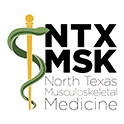Knee Pain
What is Knee Pain?
Knee pain is a common condition affecting individuals of various age groups. It not only affects movement but also impacts your quality of life. An injury or disease of the knee joint or any structure surrounding the knee can result in knee pain. A precise diagnosis of the underlying cause is important to develop an appropriate treatment plan.
Causes of Knee Pain
Some of the common causes of knee pain include:
- • Arthritis, a condition associated with inflammation of the joint due to loss of articular cartilage
- • Knee ligament injuries
- • Meniscal tears
- • Knee joint infection
- • Dislocation of the kneecap or patella
- • Patellar tendonitis, which is inflammation of the tendon connecting the kneecap to the shinbone
- • Knee bursitis, which is inflammation of the bursae, small fluid-filled sacs located around the joints usually between a tendon and bone
- • Gout or accumulation of uric acid crystals in the joints causing severe attacks of joint pain, swelling and redness
Signs and Symptoms
Some of the common signs and symptoms that accompany knee pain include:
- • Swelling and redness
- • Inability to bend or extend the knee
- • Difficulty walking
- • Limping due to discomfort
- • Difficulty weight-bearing
- • Weakness or instability
- • Popping or crunching noises
Diagnosis of Knee Pain
Diagnosis involves a detailed review of your medical history and a physical examination of the knee. Your doctor may also conduct diagnostic imaging studies such as X-rays, MRI, CT, and ultrasound scans. Blood tests may be performed to identify infection or gout. Sometimes, a procedure called arthrocentesis may also be performed, where fluid from the knee joint is removed and sent to the laboratory for analysis.
Treatment of Knee Pain
Treatment options depend upon the underlying cause responsible for the knee pain. Some of the treatment options offered by North Texas Musculoskeletal Medicine for knee pain include:
- • Stem Cell Therapy: Stem cell therapy for knee pain involves using stem cells to promote healing and regeneration of damaged tissues in the knee joint. Stem cells used for knee pain treatment can be derived from different sources, including bone marrow, adipose tissue (fat), and umbilical cord tissue. Once harvested, the stem cells are processed and concentrated to obtain a high number of viable cells. The concentrated stem cells are then injected into the knee joint. The primary goal of stem cell therapy for knee pain is to promote cartilage regeneration in damaged or degenerated knee joints. Stem cells also exert anti-inflammatory effects, reducing inflammation in the knee joint and alleviating pain associated with conditions like osteoarthritis. In addition to cartilage repair, stem cells may contribute to overall tissue repair, including ligaments, tendons, and synovial tissue within the knee joint.
- • Platelet-Rich Plasma (PRP): Platelet-rich plasma or PRP is a high concentration of platelets and plasma. A normal blood specimen contains only 6% platelets, while platelet-rich plasma contains 94% of platelets and 5 to 10 times the concentration of growth factors found in normal blood, thus greater healing properties. When PRP is injected into the damaged tissue, the platelets become activated. PRP has anti-inflammatory properties that can help reduce pain and inflammation in the affected area.
- • Prolotherapy: Prolotherapy is an injection treatment used to relieve pain. Normally, tendons and ligaments hold the bones together in place. When these tissues get injured or damaged, the bones and joints can become misaligned resulting in pain. Prolotherapy involves injecting an irritant substance into the injured area such as a knee joint. This causes mild inflammation, which results in increased blood circulation in that area to stimulate regrowth and healing of tissue. Thus, prolotherapy encourages the body’s natural healing mechanism by regenerating new cells and tissues.
- • Extracorporeal Shock Wave Therapy: Extracorporeal Shock Wave Therapy (ESWT) is a non-invasive medical treatment that uses shock waves to promote healing and relieve pain in various musculoskeletal conditions. ESWT involves the application of high-energy shock waves, generated by a device called a shock wave generator, to targeted areas of the body. These shock waves are mechanical impulses that carry energy, and they are focused on specific tissues to stimulate healing processes and reduce pain.
- • Osteopathic Manipulation (OMT): Osteopathic manipulation, also known as osteopathic manipulative treatment (OMT), can be an effective approach for managing knee pain, especially when used as part of a comprehensive treatment plan. OMT involves hands-on techniques to mobilize and manipulate the knee joint and its surrounding structures to reduce joint stiffness and pain, restore normal range of motion, and improve joint function.
